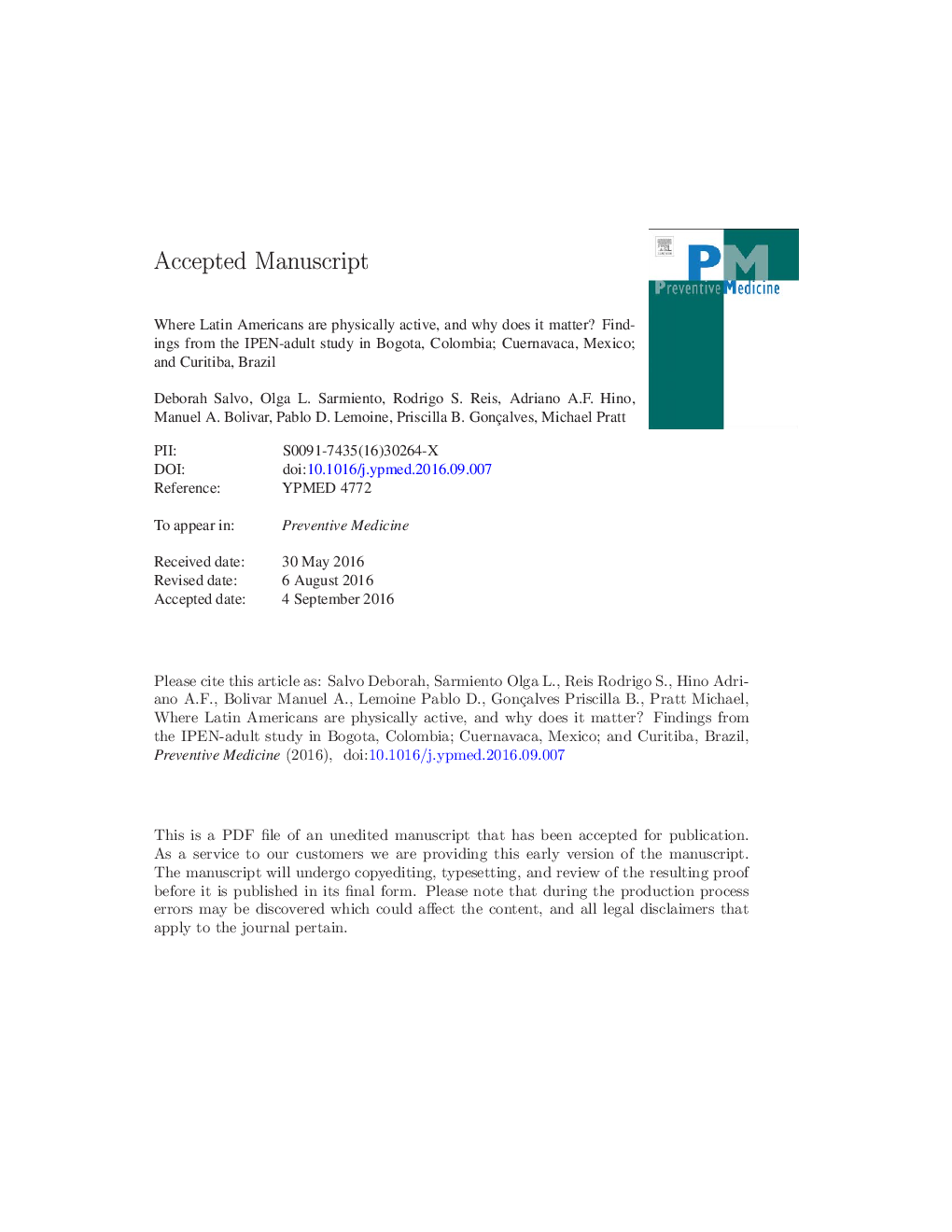| Article ID | Journal | Published Year | Pages | File Type |
|---|---|---|---|---|
| 8693800 | Preventive Medicine | 2017 | 25 Pages |
Abstract
Latin America (LA) has a unique structural, political, cultural and social environment. This study aimed to identify the places where Latin American adults are physically active; and to determine the association of using public- and restricted-access places with physical activity (PA). We used data from the International PA Environment Network study in Bogota, Colombia (n = 1000, accelerometry = 249); Cuernavaca, Mexico (n = 677, accelerometry = 652); and Curitiba, Brazil (n = 697, accelerometry = 331) (2010 â 2011). Walking and moderate-to-vigorous PA for leisure were measured with the International Physical Activity Questionnaire. Overall PA and PA within 10-minute bouts were measured with accelerometers. Participants reported use of public- and restricted-access places for PA. Mixed-effects regression models were used to determine the association of using public- and restricted-access places with PA. The streets were the most frequently-reported place for PA, and walking was the most common PA in the studied places. 'Informal', non-exercise-or-sports places (e.g., shopping malls) ranked high for use for PA in Bogota and Cuernavaca. In Curitiba, use of 'formal' places for sports/exercise (e.g., gyms) was more prevalent. Using public-access places was directly related to walking for leisure in all cities, and to additional PA outcomes in Bogota and Cuernavaca. In Cuernavaca and Curitiba, using restricted-access places was also associated with PA. Our study highlights the importance of public-access places for PA in LA. In some contexts, places for social interaction may be as important for PA as places for exercise/sport. Strategies increasing the availability, accessibility and quality of these places may effectively promote PA in LA.
Related Topics
Health Sciences
Medicine and Dentistry
Complementary and Alternative Medicine
Authors
Deborah Salvo, Olga L. Sarmiento, Rodrigo S. Reis, Adriano A.F. Hino, Manuel A. Bolivar, Pablo D. Lemoine, Priscilla B. Gonçalves, Michael Pratt,
